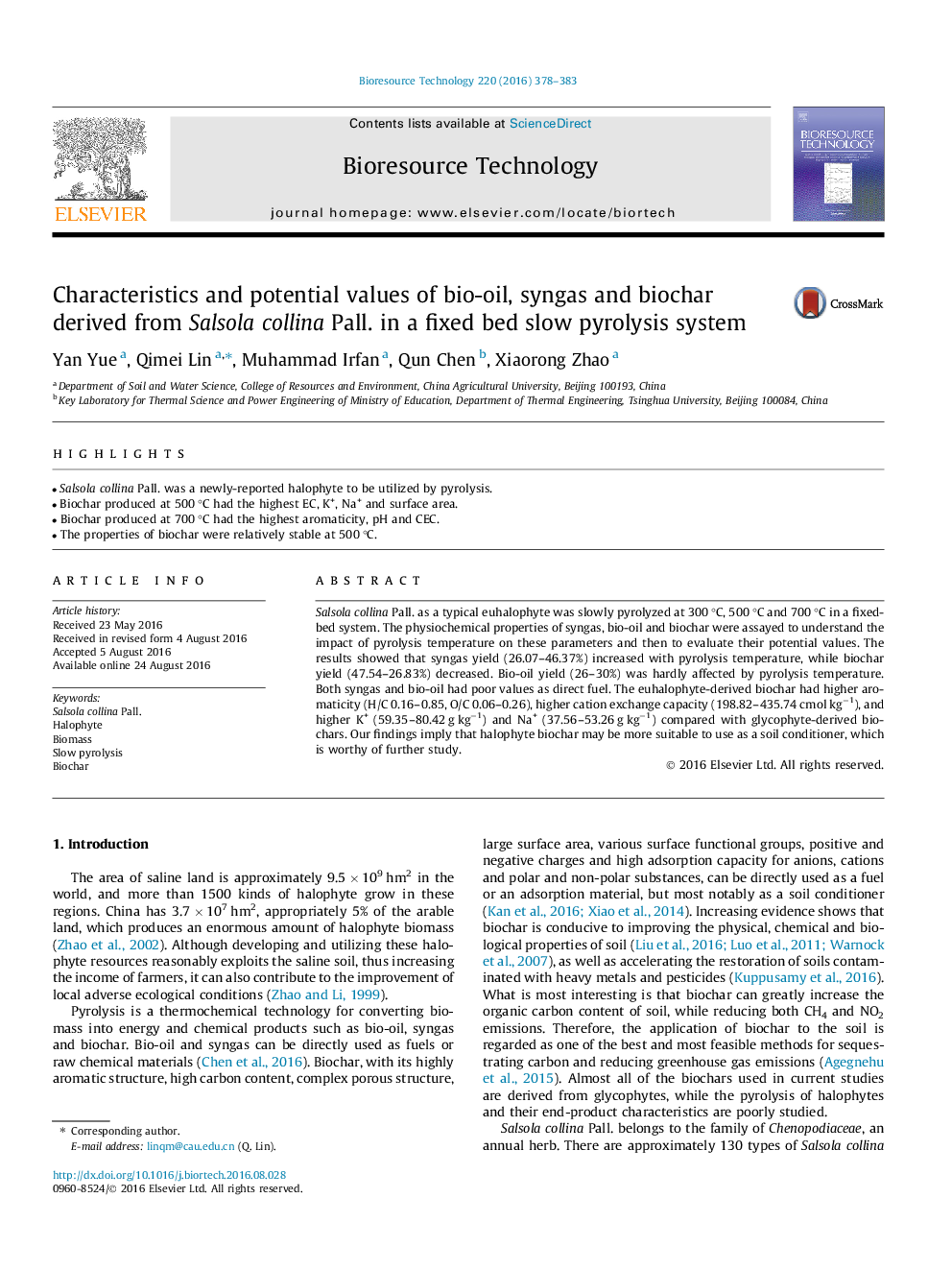| Article ID | Journal | Published Year | Pages | File Type |
|---|---|---|---|---|
| 7070130 | Bioresource Technology | 2016 | 6 Pages |
Abstract
Salsola collina Pall. as a typical euhalophyte was slowly pyrolyzed at 300 °C, 500 °C and 700 °C in a fixed-bed system. The physiochemical properties of syngas, bio-oil and biochar were assayed to understand the impact of pyrolysis temperature on these parameters and then to evaluate their potential values. The results showed that syngas yield (26.07-46.37%) increased with pyrolysis temperature, while biochar yield (47.54-26.83%) decreased. Bio-oil yield (26-30%) was hardly affected by pyrolysis temperature. Both syngas and bio-oil had poor values as direct fuel. The euhalophyte-derived biochar had higher aromaticity (H/C 0.16-0.85, O/C 0.06-0.26), higher cation exchange capacity (198.82-435.74 cmol kgâ1), and higher K+ (59.35-80.42 g kgâ1) and Na+ (37.56-53.26 g kgâ1) compared with glycophyte-derived biochars. Our findings imply that halophyte biochar may be more suitable to use as a soil conditioner, which is worthy of further study.
Related Topics
Physical Sciences and Engineering
Chemical Engineering
Process Chemistry and Technology
Authors
Yan Yue, Qimei Lin, Muhammad Irfan, Qun Chen, Xiaorong Zhao,
